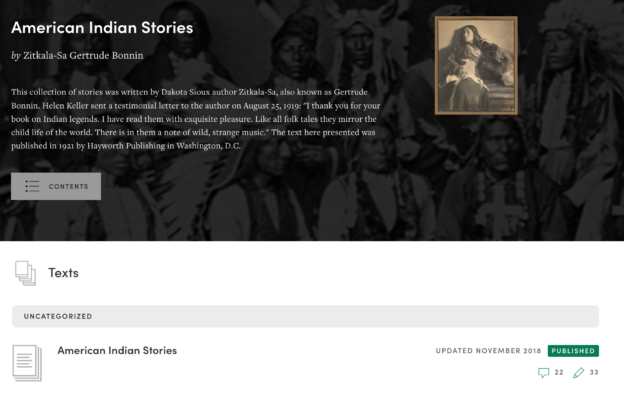Beginning class with one minute of mindfulness, we turned down the lights and closed our eyes. Our attention and sensory experiences refracted to different stimuli, internal and external, for a glorious 60 seconds. Then, we all went around the room to reflect on what that experience felt like. We spoke about a sense of inner peace, listening to one another’s breath, sounds of laughter rolling in from a class down the hall, and Orfield Laboratories’ anechoic chamber, where the longest any person is able to be inside is 45 minutes and where those inside can hear their own heartbeats.
Professor Davidson introduced this experience so we could consider how our sensory experiences shift when one sense is diminished. Professor Davidson’s mindfulness activity reminds us that embracing technology in the classroom isn’t inherently good or bad— instead we should reflect on our shift of attention when digital pedagogies are brought in and be prepared for these shifts in our attention and focus.
Professor Davidson’s and Vianna’s goal was two-fold, to usher in a class session that would look towards Indigenous pedagogies from Sandy Grande’s Red Pedagogy to Libby Roderick’s Stop Talking and then towards a collaborative public annotation exercise using Manifold’s edition of Zitkála-Šá’s American Indian Stories, Chapter Two: “The School Days of an Indian Girl.” Students gathered together in small groups to annotate the piece and their annotations can be seen here.
Professor Davidson and Vianna also experimented with taking stack in the classroom. Students anonymously generated questions that would be posed to the class while I kept a running list of students “on deck” and students who spoke on the question. Students who had already spoken on the question were placed in a queue. The goal of this practice was to encourage democratic participation in the classroom and to ensure we made space in our discussion for all students to speak.
Students on the left side of the room wrote down one urgent question they had about our readings from Charles Eliot’s “The New Education”, while students on the right side focused on Zitkála-Šá or the current historical and pedagogical writings by Indigenous scholars.
Student Urgent Questions about “The New Education”:
-
“In Eliot’s article, he describes the use of requirements (e.g. languages) to select students for the science schools. Today, we have standardized tests. Has there been progress to include/adapt to students’ interests?”
-
“Can an educational system based on foundational understandings of wilderness as something to be beaten/manipulated/controlled ever be repurposed to produce humans ‘at home’ in their environment? More broadly, what can education do to support a radically altered relationship to nature (here thinking of the Columbia School of Mining).”
-
“Did Eliot consider his writings to be influential enough to create/refashion the American education system? If so, what would have been the measure of his influence had he hearkened to the founding ideals— liberty, equality, etc.— as an ethical core for the development of a new system?”
-
“If disciplinary boundaries are products of an industry-driven value-system in the U.S., how might we work to disavow ourselves of these traditions while also empowering marginalized fields of study?”
-
“Why do most educational institutions continue to follow the model created at Harvard so many years ago given that there is more access to travel and information today?”
Student Urgent Questions about Red Pedagogy, Stop Talking and other writings by Indigenous scholars:
-
“What’s the story of people that had a bad experience within Aleut education? What does a bad experience look like in that context?”
-
“How can we employ Indigenous pedagogical practices without coming across as ‘culturally appropriating’?”
-
“How does the mistreatment of native students further the projects of settler colonialism and genocide?”
-
“How do we overcome resistance from students, faculty, administrators towards the ‘embodied, direct, oral and visual style of learning’ described in Stop Talking (p. 4)”
-
“The current educational system is so reliant on competition, productivity, individual excellence (etc.)— how can we, as instructors or future instructors, upend these values in the classroom? What strategies can we use to change our approach to teaching/learning?”
The classroom discussion was expansive and brought in a range of sources that exceeded our assigned readings. You can follow our living, changing syllabus here and our discussion-generated working bibliography here.

2 responses to “Indigenous Pedagogies and Digital Annotations with Manifold”
That is astounding! Truly, I am *mind blown* by the thought of that experience!
This sounds like such a delightful class period! Another note: John Cage could also hear his neural activity in his brain in Harvard’s anechoic chamber. The lower tones were his heartbeat and the higher tones were his neurons firing. How wonderful!